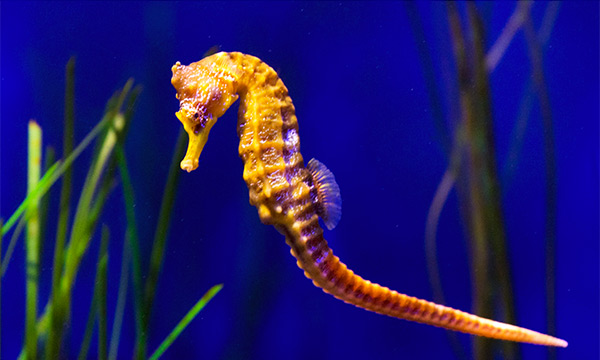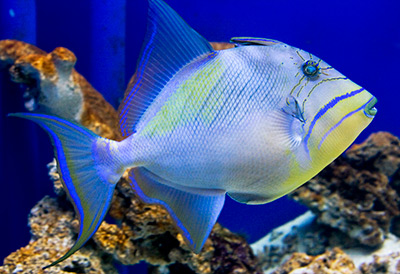A diverse community of marine fishes presents quite a visual feast, especially when housed in a reef system brimming with colorful corals. However, in some stocking situations, it’s preferable to avoid the “typical” marine community (if there is such a thing) in favor of a single-species or even a single-specimen tank.
Ah, but if you limit your livestock to a single species or specimen, won’t that make for a real yawner of a tank? On the contrary, sometimes systems that put the focus exclusively or primarily on a particular species or individual are among the most fascinating to observe.
Here are five circumstances that warrant going single-species or single-specimen:
1. The shy, specialized feeder
Seahorses, which are slow, awkward swimmers, shy by nature, and very specialized, methodical feeders, come to mind here. In your average community aquarium, these fish would basically be doomed, as they’d be unable to compete with bolder, faster-moving tankmates for food and would be unable to tolerate the brisk water movement typical of such systems. Not to mention, a community tank of any appreciable size would make it extremely difficult to provide the steady supply and high concentration of suitable food items necessary to sustain seahorses.
On the other hand, in a small dedicated system with very gentle current, no competition for food, and suitable “hitching posts” to cling to, a group of seahorses can make for a truly mesmerizing display.
2. The hyper-aggressive species
At the opposite end of the spectrum from seahorses, you have species that are beautiful but also big, belligerent, and unwilling to “play nice” with any other fish—conspecifics or heterospecifics. Among these are several of the triggerfishes, for example the queen trigger (Balistes vetula) and the undulate trigger (Balistapus undulatus). If you want to keep fish like these, your only realistic option for the long term is to house a specimen singly in a suitably large tank.
3. The pet-like predator
Here, the species that comes immediately to my mind is Diodon holocanthus, the spiny puffer, which can be almost puppy-like in its behavior toward its owner but may also be inclined to “sample” or consume tankmates. While it is possible to house D. holocanthus in a community of large, assertive species, its appreciable mature size, potential nippiness, and pet-like nature make it a perfect choice for a single-specimen tank.

4. The breeding pair
If you’re trying to encourage, say, a pair of clownfish to breed, it’s often best to give them a tank all to themselves rather than one shared with tankmates that may be perceived as competitors for food and real estate, thus potentially distracting the pair from the business at hand. Also keep in mind that post spawning, the breeding pair—or at least the female in the case of clownfish—will likely become highly aggressive toward any tankmates in defense of the eggs.
5. The school or colony
The last circumstance I’ll discuss here is housing a species that either does best or makes the most impressive visual statement when kept in schools, such as various anthias species, chromis, and the subject of my previous post (threadfin cardinals). The various jawfishes, which form colonies in the substrate, would also fit in this category. That’s not to say schooling/colonial species can’t be kept in community tanks. Oftentimes, they can. But in many cases, limited tank size precludes the possibility of keeping heterospecific tankmates when the conspecific school or colony already amounts to a pretty significant bioload.
What am I forgetting?
So, fellow salties, what other circumstances do you think might warrant a species or single-specimen tank? Let us know in the comment section below!



